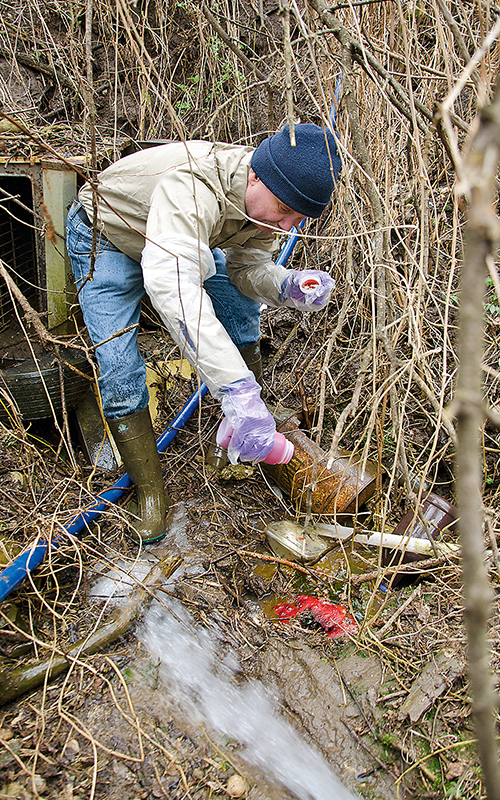The Minnesota Supreme Court will decide whether Minnesota's drinking water quality standards apply to groundwater in its review of In re Reissuance of a NPDES/SDS Permit to United States Steel Corp.
Background: MPCA's NPDES permit to U.S. Steel
On November 30, 2018, the Minnesota Pollution Control Agency (MPCA) reissued a National Pollutant Discharge Elimination System/State Disposal System (NPDES/SDS) permit to United States Steel Corporation for its Minntac facility located on the Mesabi Iron Range in Mt. Iron, Minnesota.
The permit, issued under authority of the federal Clean Water Act (CWA), sets limits on the discharge of pollutants from an unlined tailings basin, which contains silt- and sand-like remnants from the mining process, into surface waters and groundwater. The tailings basin constitutes a point source under the CWA. Water from the tailings basin seeps into nearby groundwater and, via the groundwater, to hydrologically connected surface waters that are "navigable waters" covered by the CWA. According to the MPCA, the groundwater "may emerge into the surrounding wetlands, lakes or stream channels as baseflow, or may remain in the subsurface within the regional groundwater flow system."
The MPCA set conditions related to groundwater quality in the permit, including requiring U.S. Steel to reduce sulfate levels in groundwater at the Minntac property boundary by December 31, 2025. The MPCA reasoned that, read together, Minnesota Rules Chapters 7050 and 7060 classify groundwater as class 1 waters and that the groundwater at the site is subject to class 1 water quality standards -- the standards that apply to drinking water in Minnesota.
U.S. Steel appealed the permit, challenging the groundwater conditions of the permit and the MPCA’s denial of its request for both a contested-case hearing and a variance from water quality standards.
WaterLegacy, a nonprofit advocacy firm, and the Fond du Lac Band of Lake Superior Chippewa also appealed the permit, arguing that MPCA erroneously interpreted the Clean Water Act, and that the NPDES/SDS permit is not sufficiently protective of surface waters.
2019 Minnesota Court of Appeals Decision
The Minnesota Court of Appeals heard the arguments of U.S. Steel and Water Legacy and the Fond du Lac Band of Lake Superior Chippewa, and held that the CWA does not apply to discharges conveyed by groundwater to navigable waters. 937 N.W.2d 770 (Minn. Ct. App. 2019).
The court of appeals found the term “discharge of a pollutant” in 33 U.S.C. § 1362(12) to be ambiguous when applied to "discharges from a point source to hydrologically connected groundwater," and deferred to the MPCA’s interpretation that “discharge of a pollutant” to a navigable water does not encompass discharge into groundwater -- regardless of the hydrological connection to downgradient surface water.
The court of appeals further held that "chapters 7050 and 7060 unambiguously do not classify groundwater as class 1 waters and that the MPCA therefore erred by applying class 1 water-quality standards to determine groundwater conditions in the permit."
Minnesota Supreme Court grants petitions for review
On February 26, 2020, the Minnesota Supreme Court granted petitions for further review brought by the Fond du Lac Band, WaterLegacy, and the MPCA.
The petitions for review focus on two issues:
Whether the court of appeals erred in upholding the MPCA’s position that the CWA does not extend to discharges to groundwater, even if there is a hydrologic connection to surface waters; and
Whether the court of appeals erred in rejecting the MPCA’s position that class I water quality standards apply to groundwater.
The Minnesota Supreme Court stayed proceedings pending a decision by the U.S. Supreme Court in County of Maui v. Hawai’i Wildlife Fund.
On April 23, 2020, the U.S. Supreme Court decided County of Maui, ruling that the CWA does apply to discharge of a pollutant from a point source to groundwater that ultimately reaches a navigable water, when the discharge is the "functional equivalent" of discharging that pollutant from the point source directly into the navigable water. The determination as to whether permitting requirements apply is to be based on the specific facts.
We wrote an in-depth summary of the County of Maui decision in the May 2020 edition of Water Laws.
Minnesota Supreme Court July 2020 order
The Minnesota Supreme Court issued a ruling in late July 2020, finding, on the basis of the County of Maui decision, that the court of appeals erred in deciding that polluted groundwater is not subject to CWA regulation.
As a procedural matter, the Minnesota Supreme Court rejected MPCA's and U.S. Steel's requests that the case be sent back to the MPCA to apply the "functional equivalent" standard from County of Maui to the discharges from U.S. Steel's Minntac facility. The court will decide on the next step when it issues its decision on whether the class 1 water quality standards apply to groundwater. It will hear arguments on this question later this fall.
















